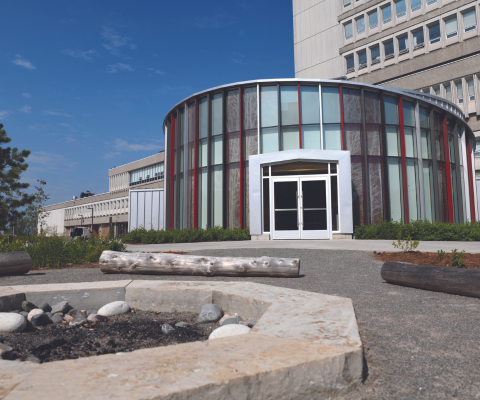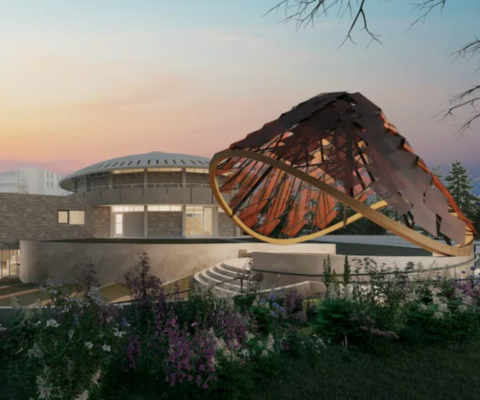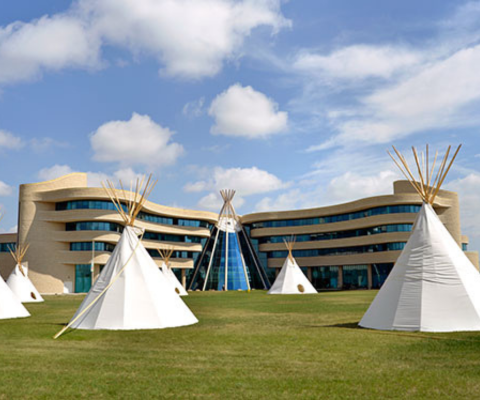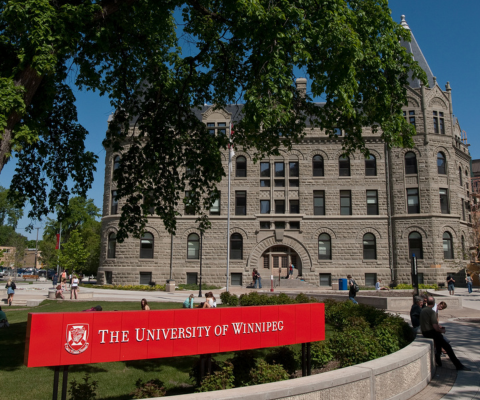Advancing reconciliation through postsecondary education
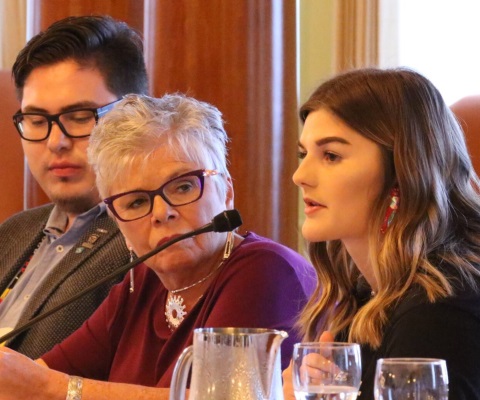
This op-ed was published in Policy Options on November 19, 2018
by Paul Davidson, president, Universities Canada and Roberta Jamieson, CEO, Indspire
Postsecondary education is the gateway for young people to access — and create — opportunities in our rapidly changing world. In Canada, we believe everyone should have the tools and support they need to achieve their potential. But many young people lack the support they need to access and succeed in higher education. And Indigenous learners have particularly imposing obstacles in their path.
The legacy of residential schools, a history of discrimination and persistent socio-economic disadvantages have created a deeply uneven playing field, often preventing Indigenous students from achieving their educational goals no matter how dedicated or hard-working they are. That’s reflected in the most basic statistics: nearly 30 percent of non-Indigenous Canadians aged 25 to 64 have university degrees, compared with just over 10 percent of Indigenous people in the same age group. Fewer than 4 out of 10 children on reserve graduate from high school, compared with 90 percent of non-Indigenous learners.
We have a moral responsibility to ensure that Indigenous learners have equal access to post-secondary education. If we fulfill that responsibility, our country as a whole will benefit — socially, culturally and economically. The Centre for the Study of Living Standards estimates that addressing the Indigenous education gap and related employment rates and income disparities could add $36.4 billion to Canada’s GDP by 2031.
Our experience and, increasingly, the data tell us that collaboration between universities and Indigenous communities is vital to righting wrongs and creating the conditions for Indigenous students to succeed. In particular, meaningful consultation with Indigenous students themselves sets us on a path to success. Their insights and experiences should play a central role in shaping public policy in this area.
We’ve made a start, but there’s more to be done
More than 70 percent of universities have partnerships with Indigenous communities and organizations to foster dialogue and advance reconciliation. Since 2013, this initiative has resulted in a 55 percent increase in the number of academic programs that focus on or are designed for Indigenous students. Yet many barriers remain.
Fundamental access is a critical issue: many First Nations learners don’t have the financial means to attend university. But the challenges don’t end there. Many Indigenous students who do make it to the post-secondary level struggle. Universities and colleges are usually located far from their families and communities, isolating them from their language, traditions and culture. The transition can be intense and extreme, and often the resources are not there to support students when they feel overwhelmed.
Postsecondary institutions and policy-makers who want to know what more needs to be done would do well to go to the source and ask the students themselves. We at Universities Canada and Indspire did exactly that in September, co-hosting a round table of young Indigenous leaders, senior university administrators and government and business representatives. We wanted to hear first-hand from First Nations, Inuit and Métis learners, and to start mapping with them the future of Indigenous student success.
Students are clear about what’s needed
The students we heard from said they need more funding to get over the access hurdle. They need to see more Indigenous representation on campuses. They need more services and programs on campus such as Indigenous student centres and access to elders.
University of Regina student Tracie Léost said Indigenous student centres are especially “crucial” because they provide not only safe places for learning and teaching, but also child care and food for students who may otherwise not be able to afford such basics. They help build a resilient sense of community.
Curriculum is another area where Indigenous students need to see themselves reflected more. Nunavut’s Maatalii Okalik, past president of the National Inuit Youth Council, said curricula need to include all Indigenous people: First Nations, Inuit and Métis. In her words: “There’s no one-size-fits-all curriculum. As we work to support Indigenous student success in higher education, it is crucial to recognize Inuit perspectives, context and culture.”
Beyond September’s round table, Indspire surveyed Indigenous students across the country and released the results in a November 2018 report, Truth and Reconciliation in Post-Secondary Settings: Student Experience.
Those findings revealed that students need help with housing, food, child care and travel from fly-in communities — and that their financial needs are generally unmet. Once on campus, they do take advantage of services like Indigenous centres but often find them overtaxed and underfunded. The programs they study often have too little Indigenous content. Postsecondary staff and educators often lack training in and knowledge of Indigenous history. And there are too few Indigenous professors, instructors and staff, depriving Indigenous learners of much-needed role models and mentors. Many students said there needed to be mandatory training in Indigenous history for all employees and instructional staff.
The path forward
Indigenous people are the fastest-growing demographic group in Canada and are younger than the Canadian average. More than 130,000 Indigenous people aged 17 to 51 will be eligible to attend post-secondary university by 2023. We need to be ready to support them. Facilitating the success of Indigenous students is a key part of the process of reconciliation.
To level the playing field, we are calling on the government of Canada to increase investment in First Nations, Inuit and Métis learners in Budget 2019. Doing so was promised in Budget 2017.
This investment includes funding for university programs and partnerships that support Indigenous student success and reflect and respect Indigenous content, learning and history. It also involves more funding to help Indspire increase the number of scholarships and bursaries it awards, building on its already strong record. To date, 90 percent of Indspire-supported students graduate. Unfortunately, Indspire is able to provide students with only about 20 percent of the funding they need, leaving students with continuing financial pressures.
As a society and a country, we have the responsibility to ensure that all our students have what they need to follow their dreams and make the most of future opportunities. Not only is this vital to advancing reconciliation, but it will also make our country stronger, more innovative and more inclusive. It will make us all better able to thrive in a changing world and a shifting global economy.
Indigenous students are showing us the way.
-30-
About Universities Canada
Universities Canada is the voice of Canada’s universities at home and abroad, advancing higher education, research and innovation for the benefit of all Canadians.
Media contact:
Lisa Wallace
Assistant Director, Communications
Universities Canada
[email protected]
Tagged: Indigenous education
